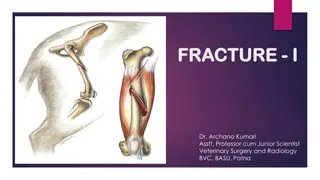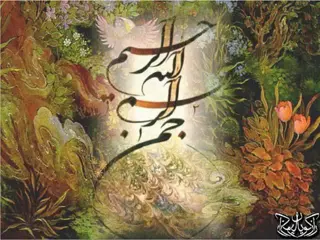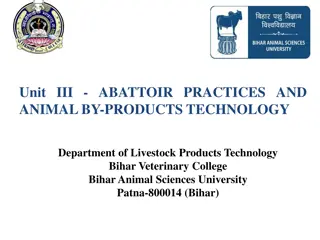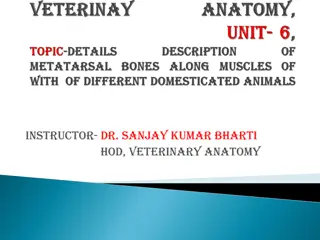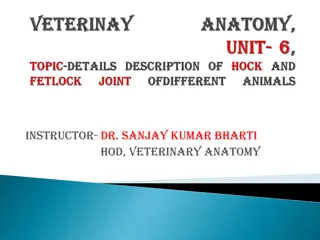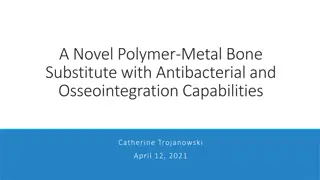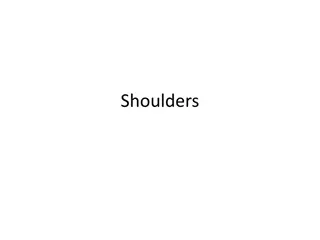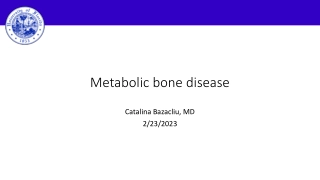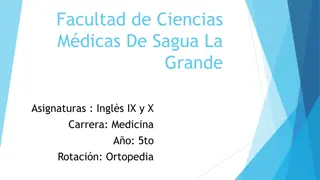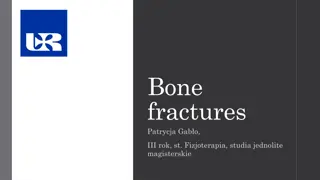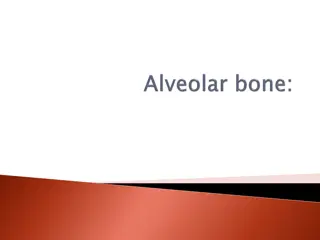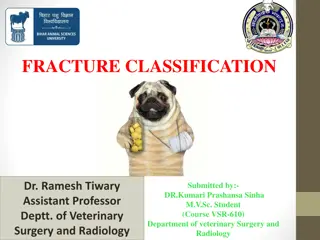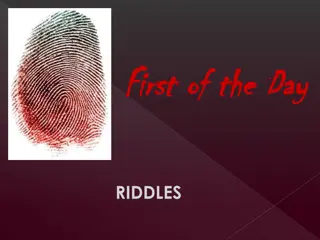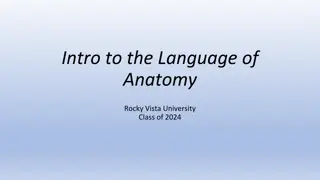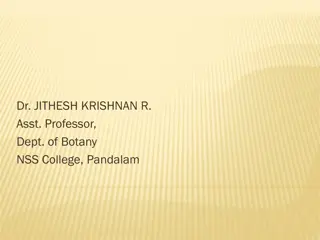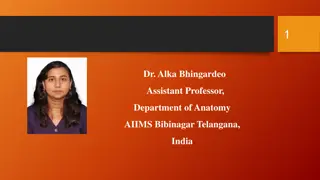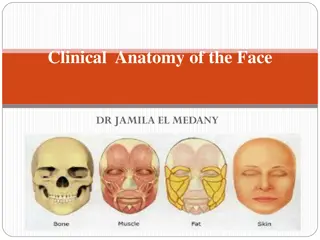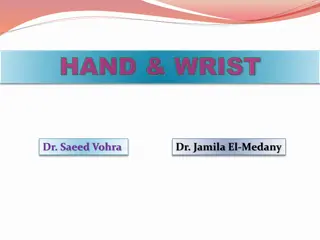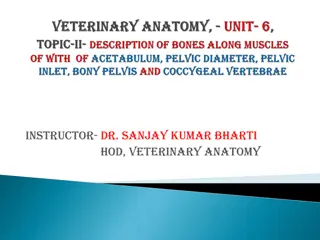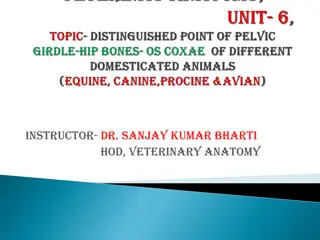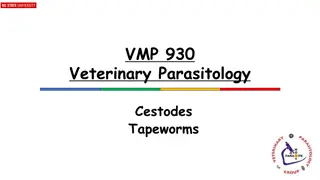Anatomy of the Humerus Bone in Veterinary Science
The humerus bone, also known as the arm or brachial bone, plays a crucial role in forming the shoulder and elbow joints. It features a shaft with distinct surfaces and nutrient foramen. The proximal extremity includes a head, neck, tuberosities, and a bicipital groove for various muscle attachments. Understanding the detailed structure of the humerus bone is essential for veterinary anatomy studies.
Download Presentation

Please find below an Image/Link to download the presentation.
The content on the website is provided AS IS for your information and personal use only. It may not be sold, licensed, or shared on other websites without obtaining consent from the author. Download presentation by click this link. If you encounter any issues during the download, it is possible that the publisher has removed the file from their server.
E N D
Presentation Transcript
M.V.Sc Programme VAN-601 UNIT-II HUMERUS (ARM OR BRACHIAL BONE) By Dr. Manoj Kumar Singh Asst. Prof. Veterinary Anatomy Bihar Veterinary College Patna-14
Q 1. Why humeru bone is called humerus ? Q 2. What is the typical characteristic of long bone ? Ox It is a long bone situated obliquely downward and backward. Forms shoulder joint above with the scapula and the elbow joint below with the radius and ulna. It has a shaft and two extremities.
Shaft: It is twisted and has four surfaces. The anterior surface is triangular, wide and smooth above,narrow and roughend below. The posterior surface blends with the medial and lateral surfaces.It is round and smooth. Nutrient foramen is situated distal third or middle of this surface.
The medial surface is nearly straight in its length and rounded Just above its middle there is teres tubercle / tuberosity for the attachment of tendon of latissimus dorsi and teres major muscles. The lateral surface is spirally curved and forming the musculo- spiral groove,which accommodates brachialis muscle. The groove is continuous with the posterior surface above and winds around towards the front below. This surface is separated from the anterior by a distinct border known as crest of humerus, which bears above its middle the deltoid tuberosity.
The cephalicus and superficial pectoral and the deltoid tuberosity for the deltoideus muscle. A curved line extends upward from the deltoid tuberosity and is for the lateral head of triceps. At the upper part of the curved line is a nodule for the teres minor. crest is for the insertion of brachio-
Proximal extremity: It is large and consists of a head, neck, two tuberosities and the intertuberal or bicipital groove. The head is circular convex and articulates with the glenoid cavity of the scapula. Which is twice extensive. A fossa is present in front of the head , in which there are several foramina .
The lateral tuberosity is large and prominent which consists of two parts - a summit and a convexity. Summit is curved over the bicipital groove and posteriorly there is a convexity. The summit gives attachment to the lateral tendon of the infraspinatus. The convexity gives attachment medially to the medial tendon of the infraspinatus. placed anteriorly and
The medial tuberosity is smaller and consists of anterior and posterior parts. The anterior part forms the medial boundary of the intertuberal groove and gives attachment to the medial tendon of supraspinatus and to the deep pectoral. The posterior part is for the subscapularis. The bicipital groove gives passage to tendon of biceps brachii muscle.
Distal extremity: It is articular, expanded and basically it is divided by a ridge into two modified condyles,the medial or trochlea and lateral or capitulum. The medial one is larger and is crossed by a groove, which extends caudally to the olecranon fossa and cranially to the coronoid or radial fossa. The coronoid fossa, receives the coronoid process of the radius in extreme flexion of the elbow joint. The olecranon fossa receives the anconeus process of ulna during extension of the joint.
Behind and above the concerned condyles there are two epicondyles. The medial epicondyle gives origin to flexor muscles of the carpus and digits. The lateral epicondyle gives origin to extensor carpi radialis The epicondyloid crest is a part of lateral epicondyle which forms the lateral boundary of the Musculo spiral groove. The distal extremity also presents a rough depression laterally and a tubercle medially for the collateral ligaments of the elbow joint.
Horse The deltoid tuberosity is more prominent. The bicipital groove is divided by intermediate ridge. The summit of lateral tuberosity does not overhang the bicipital groove. The coronoid and the olecranon fossa are shallower. Musculo spiral groove is more deep and twisted.
Pig It has the appearance of italic letter f . The shaft is laterally compressed and flat on the medial side. The musculo-spiral groove is shallow and the deltoid tuberosity is small or rudimentary. Teres tubercle is absent. Occasionally the suprtrochlear foramen is present.
Dog The musculospiral groove is shallow. The deltoid tuberosity is in the form of a low ridge. The lateral tuberosity is undivided. The coronoid and the olecranon fossa communicate with each other through the supratrochlear foramen . Head is rounded and is more convex.
Fowl The bone is directed parallel to thoracic vertebrae when the wing is at rest. The pneumatic foramen is situated medially below the head. The body is less twisted. The head is oval in form . Proximally this bone articulates with scapula and coracoid.



